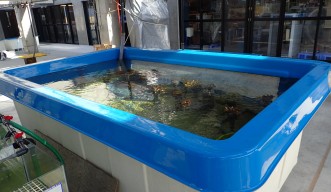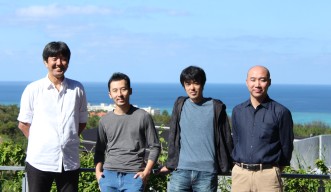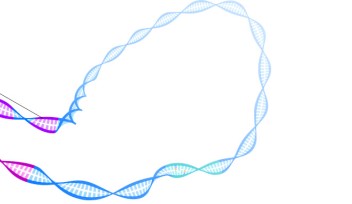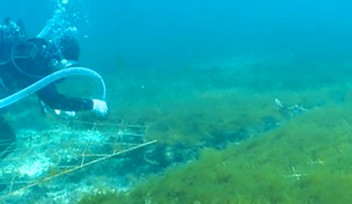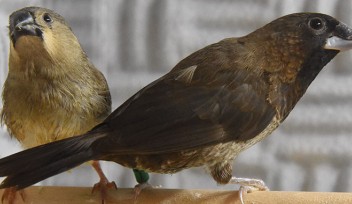Bizarre Reproduction Strategy Confirmed for the First Time in Okinawan Stony Coral
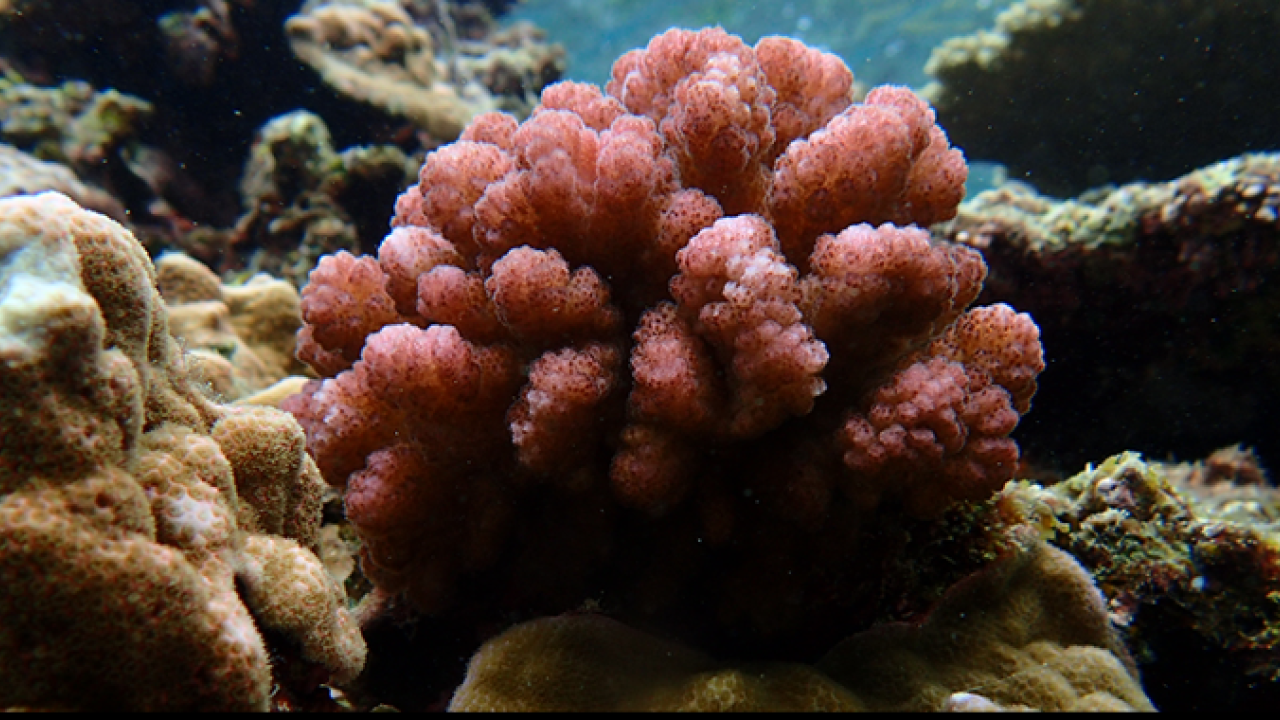
The islands of Okinawa are surrounded by magnificent coral reefs. However, in recent years changing climatic and anthropogenic conditions have left large stretches of these reefs damaged and destroyed. Because coral reefs are sensitive to changes in their surroundings, scientists consider them to be good indicators of climate change. Yet, gaps exist in the basic understanding of the physiology, dynamics and functioning of coral reef systems.
In a recent study, Dr. Yuichi Nakajima, a postdoctoral researcher in the Marine Biophysics Unit led by Prof. Satoshi Mitarai, and their colleagues in that unit and at the Marine Station at the Okinawa Institute of Science and Technology Graduate University (OIST) have discovered that Pocillopora acuta, a species of coral found in reefs around the Okinawan islands, can reproduce asexually in a way different from what is usually observed. It is the first time that this asexual reproduction has been recorded in the region. Knowing that the corals can reproduce in this way may point to strategies for conserving the reefs, the scientists say. The study was published in the journal PeerJ.
The OIST Marine Biophysics Unit maintains large outdoor tanks containing several species of corals in their laboratory adjacent to the sea. Earlier this year, while conducting routine observations for an ongoing project that involves examining the genome and physiological processes of various coral species, Dr. Nakajima and his colleagues observed small colonies of Pocillopora-like coral growing on the tank walls, close to the water surface. These new additions surprised them, because none of the adult coral colonies had shown signs of spawning -- a process by which corals release gametes into their surroundings.
“Reproduction in corals is still an ambiguous process,” explains Dr. Nakajima. Coral species multiply through a sexual method, but some species reproduce both sexually and asexually. In the case of sexual reproduction, coral colonies release gametes into their surroundings, and after fertilization they sink into the seabed and seed new colonies. The genomic makeup of these new colonies, called genotypes, are a mixture of those of their parents. One of the most common asexual reproduction methods found in corals is through fragmentation, where small fragments from the parent colony grow into separate independent colonies. However, a few species are also known to exhibit a second method where they release spore-like structures called planulae, that can also form colonies. In both cases, the genotype of the new colonies is a replica of its parent.
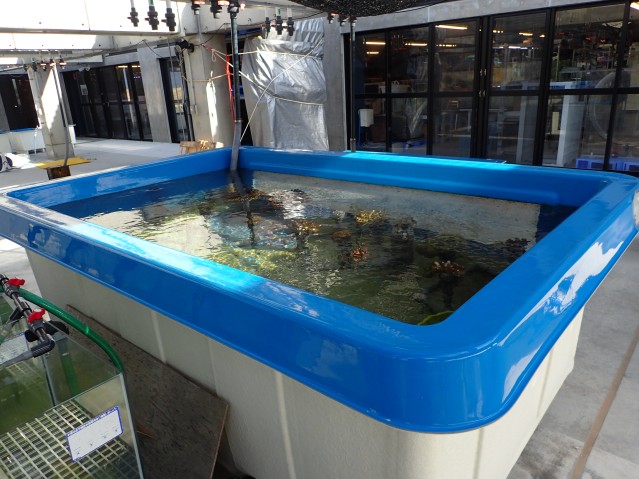
Genetic studies identified the coral Dr. Nakajima had collected as Pocillopora acuta, a species of stony coral that is common in tropical and subtropical coastal seas in the Indo-Pacific region. Corals of the genus Pocillopora have been known to reproduce sexually and asexually. In this case, the researchers suspected the new colonies did not form through fragmentation because they did not see any broken coral fragments. Instead, they thought other, lesser-known asexual reproduction methods were at work – either the production of planula, or polyp bail-out: a phenomenon whereby a coral ejects live polyps that swim away and settle elsewhere to begin a new life.
To find out whether these colonies arise from asexual reproduction, the researchers sequenced the DNA of the corals and compared nine microsatellite loci – short stretches of repeating DNA sequences with a high mutation rate – to investigate the relationship between potential parental colonies and the new coral colonies. All the nine loci had polymorphic repeats, and the microsatellite genotype pattern of one potential adult colony found in the tank matched the genotype pattern of most of the new coral colonies.
Previous studies have observed this asexual reproduction in the genus Pocillopora in laboratory setups in Australia and Taiwan, but this is the first time it has been observed in Okinawa. It remains unclear whether these new colonies were formed through the release of planula larvae or by polyp bail-out, the latter being an indication of stressful environmental conditions that could threaten the survival of coral colonies in the future.
Dr. Nakajima and colleagues are now planning to conduct more experiments to better understand how Pocillopora acuta reproduces under different environmental conditions.
“Pocillopora acuta is one of the commonly found stony coral species that helps form the basic structure of coral reefs in Okinawa,” says Dr. Nakajima. Understanding its life cycle strategies may help design effective techniques to conserve the coral species in the future, the scientists say.
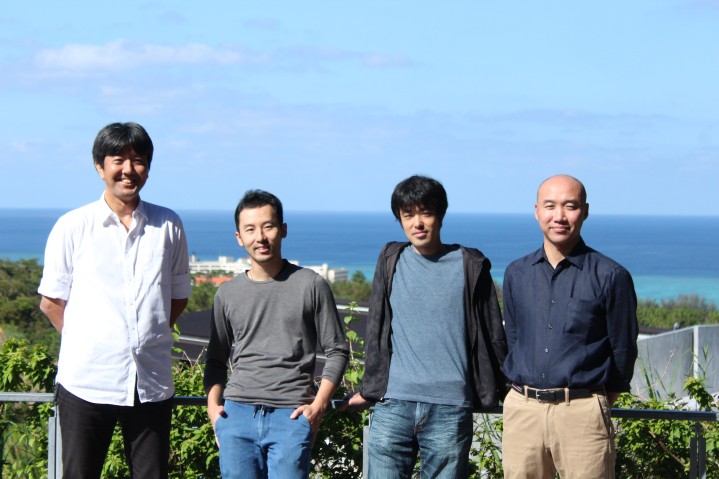
Specialty
Research Unit
For press enquiries:
Press Inquiry Form










